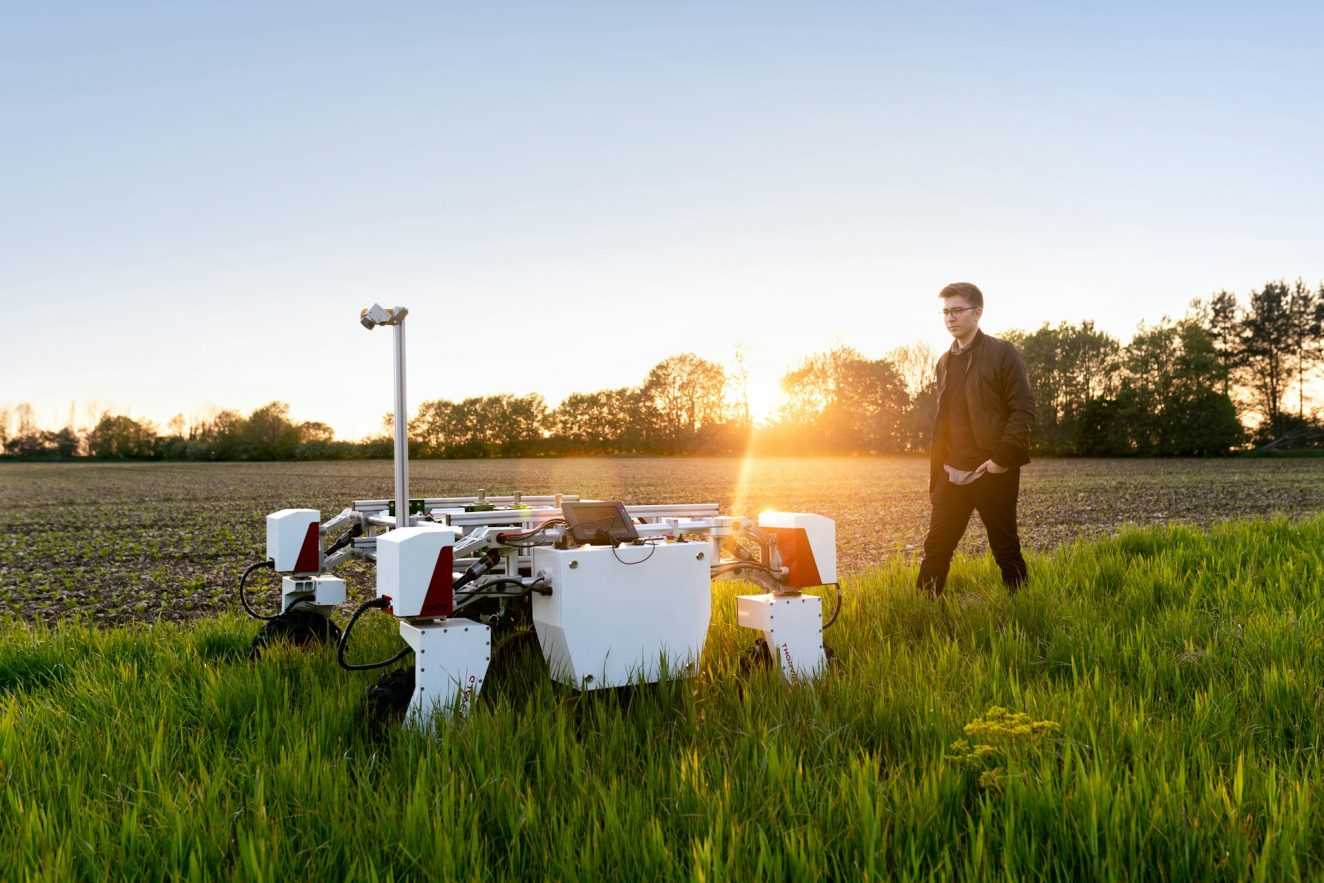The integration of autonomous mobile robotics into the industrial landscape has ushered in a paradigm shift, revolutionizing both production processes and manufacturing management. At the heart of this transformation lies a singular advantage: the enhancement of human well-being. In this exploration, we look into the myriad benefits of industrial robots and their important role in improving the renowned 4 D’s – Dull, Dirty, Dangerous, and Dear.

Dull: Reshaping Repetitive Tasks
Monotonous and repetitive tasks, known to trigger boredom and fatigue, find an efficient solution in the realm of autonomous mobile robotics. In logistics and internal transport within warehouses, robots now seamlessly perform tasks that were once mundane for human workers. This liberation from tedious chores empowers humans to focus on creative and strategic activities, ultimately adding greater value to the workforce.
In agriculture, the deployment of autonomous mobile robots, such as RB-VOGUI, is reshaping repetitive tasks like harvesting and phytosanitary processes. These robots bring accuracy and consistency to planting, harvesting, and plant care, liberating farmers from hours of routine work and significantly boosting efficiency in agriculture.
Dirty: Automation in Hazardous Environments
Industries dealing with toxic substances, mines, and disaster areas often expose workers to hazardous conditions. Autonomous mobile robotics steps in to mitigate these risks. In factories, robots proficiently handle toxic materials, reducing the health risks associated with human exposure. The HR-RECYCLER project showcases how robots efficiently manage electronic waste, ensuring worker safety while handling potentially harmful substances.
Autonomous robots navigate dirty environments, exploring underground tunnels for minerals without risking human safety. Additionally, they play a vital role in disaster areas, conducting rescue missions where human presence could be perilous due to exposure to debris, chemicals, or radiation.
Dangerous: Mitigating Risks for Workers
The execution of dangerous tasks that jeopardize the well-being of employees is a constant concern in many industries. Autonomous mobile robotics emerges as a viable solution to reduce these risks. In the construction industry, robots tackle hazardous tasks such as demolishing buildings in unstable conditions or mapping deteriorated constructions. This not only safeguards workers from exposure to perilous situations but also ensures thorough safety inspections in hard-to-reach locations.
Dear: Enhancing Efficiency and Reducing Costs
Cost reduction is a universal need for manufacturers, and the survival of many factories hinges on their ability to cut expenses. Autonomous mobile robotics not only enhances task safety and quality but also proves cost-effective in the medium term.
The flexibility of production is a crucial cost-related advantage. Mobile robots swiftly adapt to various tasks and environments, embodying versatile and multifunctional machines. In manufacturing, these robots operate 24/7, significantly boosting production efficiency without the need for extended breaks. The logistics sector benefits from autonomous mobile robots, optimizing delivery routes, reducing transport costs, and minimizing human errors in warehouse management.

The Uncharted Evolution of Autonomous Mobile Robotics
While significant strides have been made in improving the 4 D’s through autonomous mobile robotics, the potential of this technology is far from exhausted. Advances in artificial intelligence, sensors, and navigation technologies continue to enhance the versatility and capabilities of robots.
In agriculture, for instance, robots are evolving to selectively identify and remove weeds, reducing the reliance on chemical herbicides. The benefits of industrial robots extend from heightened productivity and improved product quality to reduced labor costs and enhanced workplace safety.
The Future of Human-Robot Collaboration
The collaboration between humans and robots is becoming increasingly pivotal. Robots autonomously handle tasks that are dull, repetitive, dangerous, or expensive, allowing humans to contribute their unique capabilities. This collaboration results in continuous productivity, consistent product quality, reduced downtime, and less waste. The integration of mobile robots with the Internet of Things (IoT) further augments their capabilities, enabling real-time data collection and optimized production processes.

In conclusion, the adoption of mobile robots not only propels individual companies to greater global competitiveness but also contributes to the overall evolution of industrial practices. By increasing efficiency, reducing production costs, and fostering a safer work environment, autonomous mobile robotics elevates the manufacturing landscape, enabling organizations to thrive in a demanding global marketplace.





